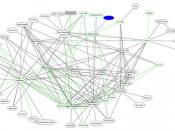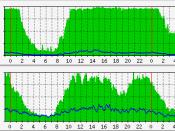IPv6 ExaminedInternet Protocol Version 6 (IPv6), also known as IP Next Generation (IPng), is the next stage of the Internet Protocol (IP) and has become a part of IP support in many computing products. IPv6 is a new version of IP, which is designed to be the next incremental step from IPv4. It was designed to run on high performance networks, such as Gigabit Ethernet, OC-12, ATM, etc., and still be efficient for low bandwidth networks. Most of today's internet uses IPv4, which is over twenty years old. Although IPv4 has been extraordinarily stable, it has begun to have problems. The biggest concern is the ever increasing shortage of IPv4 addresses, which new computing devices need to connect to the Internet. IPv6 was invented at Xerox Parc and adopted by the Internet Engineering Task Force in 1994, to address these problems. IPv6 fixes a number of problems in IPv4.
The most important being IP addresses which are being lengthened from 32 bits to 128 bits. Thirty - two bit address spaces provide 4 billion possible addresses and are expected to be exhausted, by 2008, by the few highly industrialized countries. However, the 128-bit address spaces expand the potential number of address into the trillions, thus, anticipating the substantial future growth of Internet ready computing devices. According to an article in America's Network (2006), "the advanced protocol enables trillions of times more addresses to support a nearly unlimited array of devices". "IPv6 describes rules for three types of addressing: unicast (one host to one other host), anycast (one host to the nearest of multiple hosts), and multicast (one host to multiple hosts)" . IPv6 adds improvements in areas such as routing and network auto-configuration. It is expected to progressively replace IPv4, with both of them coexisting for a number...


